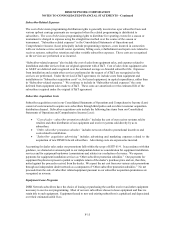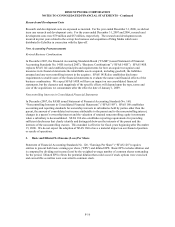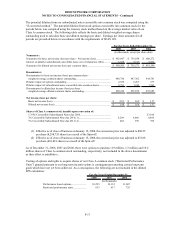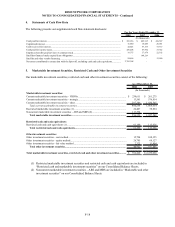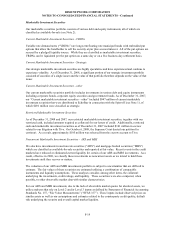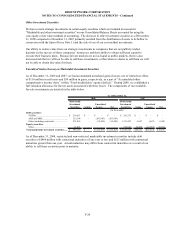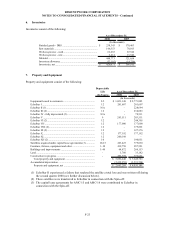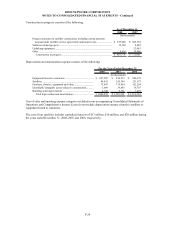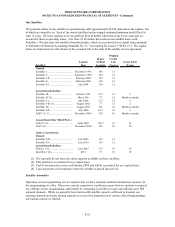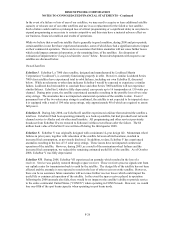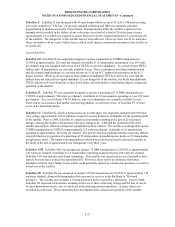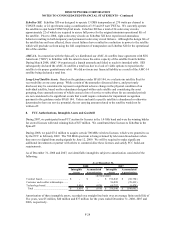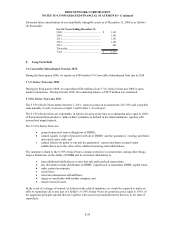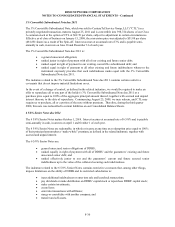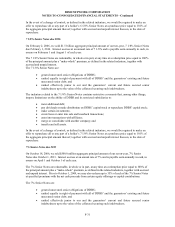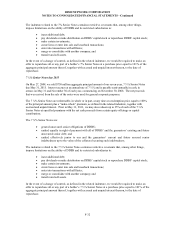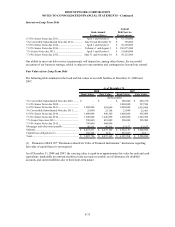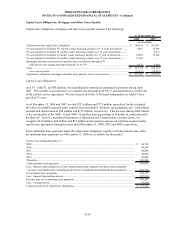Dish Network 2008 Annual Report Download - page 107
Download and view the complete annual report
Please find page 107 of the 2008 Dish Network annual report below. You can navigate through the pages in the report by either clicking on the pages listed below, or by using the keyword search tool below to find specific information within the annual report.
DISH NETWORK CORPORATION
NOTES TO CONSOLIDATED FINANCIAL STATEMENTS - Continued
F-25
Our Satellites
We presently utilize twelve satellites in geostationary orbit approximately 22,300 miles above the equator, five
of which are owned by us. Each of the owned satellites had an original estimated minimum useful life of at
least 12 years. We lease capacity on seven satellites from EchoStar with terms of up to two years and we
account for these as operating leases. (See Note 19 for further discussion of our satellite leases with
EchoStar.) We also lease two satellites from third parties, which are accounted for as capital leases pursuant
to Statement of Financial Accounting Standards No. 13, “Accounting for Leases” (“SFAS 13”). The capital
leases are depreciated over the shorter of the economic life or the term of the satellite service agreement.
Original
Degree Useful
Launch Orbital Life Lease Term
Satellites Date Location (Years) (Years)
Owned:
EchoStar I ...................................... December 1995 148 12
EchoStar V...................................... September 1999 129 12
EchoStar VII .................................. February 2002 119 12
EchoStar X...................................... February 2006 110 12
EchoStar XI..................................... July 2008 110 12
Leased from EchoStar:
EchoStar III..................................... October 1997 61.5 12 2
EchoStar IV (1)............................... May 1998 77 12 Month to month
EchoStar VI .................................... July 2000 72.7 12 2
EchoStar VIII (1)............................ August 2002 77 12 2
EchoStar IX .................................... August 2003 121 12 Month to month
EchoStar XII .................................. July 2003 61.5 10 2
AMC-15 (1).................................... December 2004 105 10 Month to month
Leased from Other Third Party:
Anik F3 (2)...................................... April 2007 118.7 15 15
Ciel II (3)........................................ December 2008 129 10 10
Under Construction:
Owned:
EchoStar XIV.................................. Late 2009 119 12
EchoStar XV................................... Late 2010 119 12
Leased from EchoStar:
Nimiq 5 (4)..................................... Late 2009 72.7 10 10
QuetzSat-1 (4)................................. 2011 77 10 10
(1) We currently do not lease the entire capacity available on these satellites.
(2) This satellite is accounted for as a capital lease.
(3) Ciel II was placed in service in February 2009 and will be accounted for as a capital lease.
(4) Lease payments will commence when the satellite is placed into service.
Satellite Anomalies
Operation of our programming service requires that we have adequate satellite transmission capacity for
the programming we offer. Moreover, current competitive conditions require that we continue to expand
our offering of new programming, particularly by expanding local HD coverage and offering more HD
national channels. While we generally have had in-orbit satellite capacity sufficient to transmit our
existing channels and some backup capacity to recover the transmission of certain critical programming,
our backup capacity is limited.


